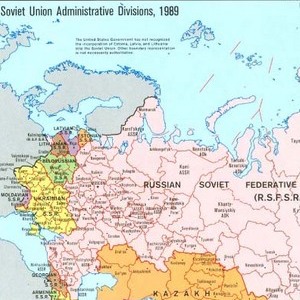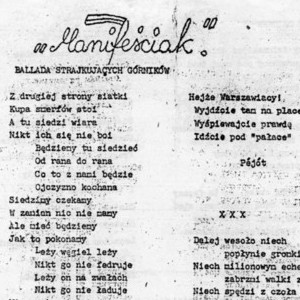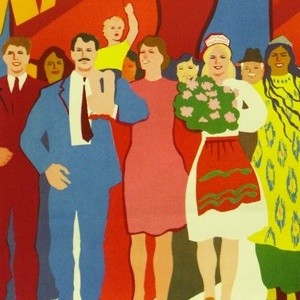Politics

Soviet Map, 1982
This map provides one representation of the national composition of the Soviet Union in the early 1980s. As the distribution of colors indicates, each of the major ethnic groups occupied specific regions of the country.

Soviet Nationalities Map, 1989
This map offers a different representation of the same information as in Document 1. In this case, the population distribution of each Soviet republic is depicted in the pie charts and in the accompanying table.

Soviet Administrative Map, 1989
This map describes the administrative structure of the Soviet Union. The fifteen Soviet federative socialist republic provided one division along national lines, yet this map also demonstrates how each region was further divided into territorial units.

Tear Down this Wall
On June 12, 1987, President Ronald Reagan delivered a major speech on the Cold War with the Brandenburg Gate and the Berlin Wall as a back drop. In staging this speech, President Reagan hoped to draw a parallel with the historic speech delivered in Berlin by President John F.

Reagan at the Brandenburg Gate
On June 12, 1987, President Ronald Reagan delivered a major speech on the Cold War with the Brandenburg Gate and the Berlin Wall as a back drop. Since the end of World War II, Berlin had been one of the main symbols of the Cold War.

Ballad of the Striking Miners: Ballada Strajkujacych Gornikow!
The image here is a picture taken of one of the circulated copies of the "Ballad of the Striking Workers." Referenced in Padraic Kenney's scholarly interview segment "Does This Poem Explain the Strike?," this ballad (and many others like it) were used effectively by Solidarity in its campaign to

Young Alcoholics in the Soviet Union
Before the era of the Gorbachev reforms, social and health problems could not be easily discussed in the Soviet Union. The emphasis for public health was on keeping people healthy so that they could work better and more productively.

Celebrating Soviet Achievements in the 1980s
Soviet authorities valued posters as a most accessible form of propaganda with origins in the early days of the Communist Revolution as a way of reaching out to an illiterate audience. Throughout Soviet history, posters remained a visible indication of the Party's official interests.

US-Soviet Summit in Washington, DC
In December 1987, President Ronald Reagan and Mikhail Gorbachev signed the Intermediate-Range Nuclear Forces Treaty (INF) in Washington, DC. The treaty eliminated both nuclear and conventional ground-launched ballistic missiles with a range of 300-3,400 miles.

Spy Radio from East Germany
These images depict a small transistor radio of the type a resident of Berlin might own during the 1960s or 1970s.